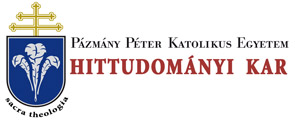Folia Theologica 18. (2007)
Szabolcs Anzelm Szuromi: Peculiarities of the conception of 'sacred power' and its exercise between 1073 and 1303
268 SZ. A. SZUROMI letter Pope Innocent mentions that if the civil tribunal is not inclined to introduce the case, or has foregone its right to impose penalties, then an ecclesiasticall process may take place.34 4. The exercise of earthly power which has its fundamental origin in the divine law, as connected particularly to ordained or consecrated persons as 'ius sacrum', was theoretically explained in the well-known proclamation of Pope Boniface VIII (1294-1303). The Holy Father pointed out in his bull of September 20, 1296 (Ineffabilis), that the pope has the competence to supervise each decision of the king. The debate had been temporarily over on June 27, 1298, when the English and French King accepted Boniface as a judge in their dispute. The pope declared, that eternal peace should be concluded between the two kings for the future.35 During this debate the Roman Pontiff had signed an agreement with Giacomo of Aragon on the investiture question of Sardinia and Corsica on April 4, 1297.36 Boniface VIII promulgated the bull Unam Sanctam on November 18, 1303, which explained the relationship between the Church and state based on the "Theory of the Two Swords".37 The two swords are an analogy from the story of the arrest of Jesus. The swords signify the two powers which are in the world: the spiritual and the secular power. The spirital sword is possessed by the pope, the secular one is possessed by the emperor. Because all power springs from God and serves the promotion of the salvation of souls, God gives this power through the Church for the people, on the one hand by the sacraments and teaching to advance the salvation of the faithful, on the other hand by the promotion of peace in human society to help the sanctification of human life.38 This inter34 X 2. 2. 10; cf. X 2. 2. 6-7. 35 ULLMANN, A Short History of the Papacy, 270-275. 36 MERCATI, A. (ed.), Racolta di concordati, 112-119. 37 JOHANNESSEN, R.M., Cardinal Jean Lemoine and the authorship of the glosses to Unam Sanctam, in Bulletin of Medieval Canon Law 18 (1988) 33-41. ERDŐ, Die Quellen des Kirchenrechts, 128. 38 Unam sanctam ecclesiam catholicam et ipsam apostolicam urgente fide credere cogimur et tenere, nosque hanc firmiter credimus et simpliciter confitemur, extra quam nec salus est, nec remissio peccatorum, sponso in Canticis proclamante: “Una est columba mea, perfecta mea. Una est matri suae, electa genetrici suae;” quae unum corpus mysicum repraesantat, cuius caput Christus
